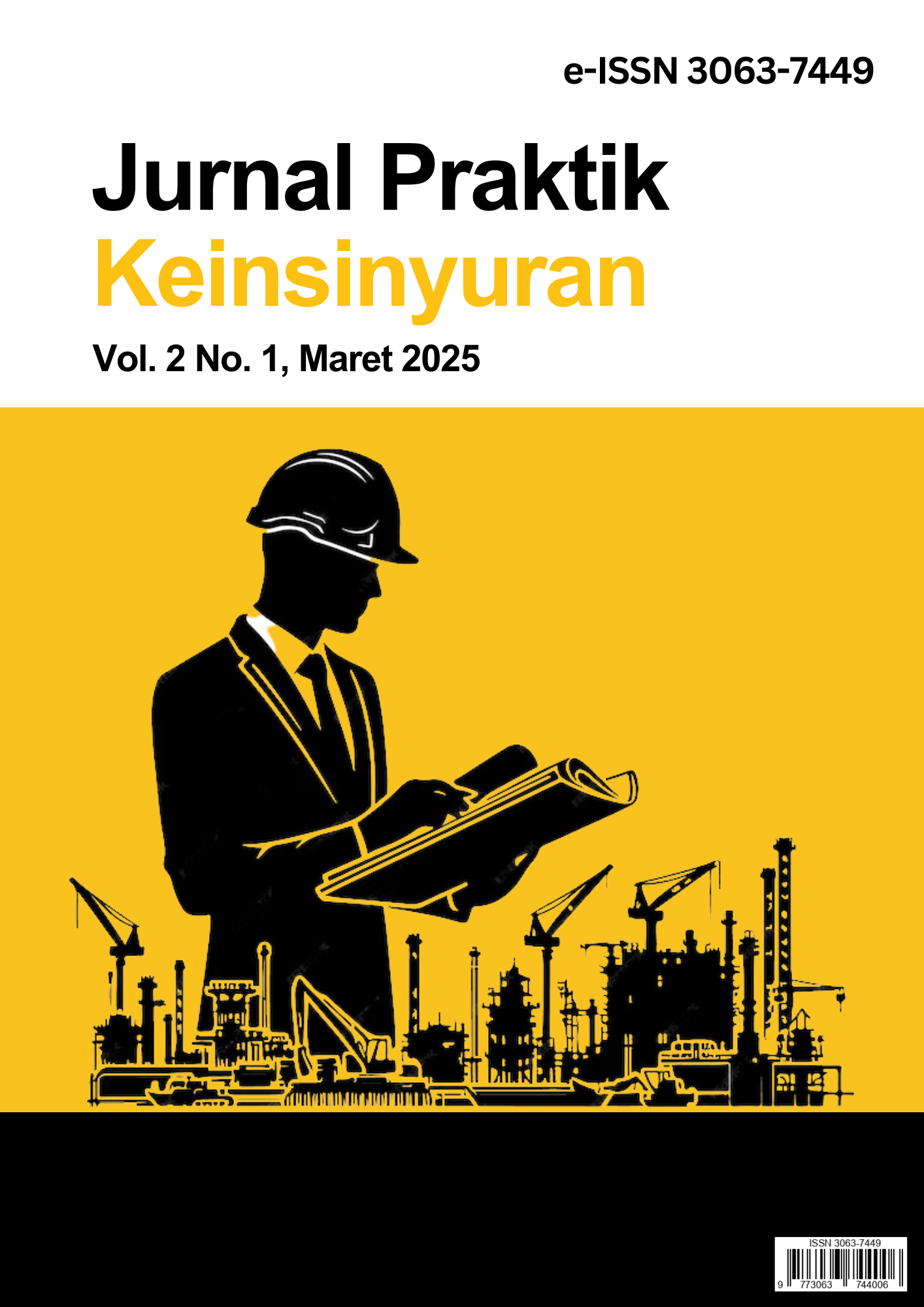Building Information Modeling (BIM) 5D dalam Praktik Profesi Quantity Surveyor (QS): Estimasi dan Kontrol Biaya
DOI:
https://doi.org/10.25170/jpk.v2i01.6251Keywords:
BIM 5D, Professional Practice, Quantity Surveyor, Estimation, Cost AccuracyAbstract
Building Information Modeling (BIM) 5D is an increasingly popular technology in the construction industry, especially managing project information more efficiently and accurately. This study examines the use of Building Information Modeling (BIM) 5D in predicting and controlling construction project costs, focusing on the role of Quantity Surveyor (QS) in engineering practice. This study aims to explore the efficiency of information management and the accuracy of cost estimation through the integration of BIM 5D. The method used is a descriptive qualitative approach with data collection through interviews, observations, and documentation. The results show that BIM 5D improves the accuracy of cost estimation and minimizes errors in manual calculations, which has implications for more efficient cost management. This research makes a significant contribution to the development of QS practices in the construction industry, as well as opens up opportunities for further research in the application of BIM 5D.
References
1. Ahmed, S. F., Mofijur, M., Rafa, N., Chowdhury, A. T., Chowdhury, S., Nahrin, M., ... & Ong, H. C. (2022). Green approaches in synthesising nanomaterials for environmental nanobioremediation: Technological advancements, applications, benefits and challenges. Environmental Research, 204, 111967.(Li et al., 2023).
2. Alteneiji, K., Alkass, S., & Abu Dabous, S. (2020). A review of critical success factors for public-private partnerships in affordable housing. International Journal of System Assurance Engineering and Management, 11(6), 1192-1203.
3. Aufa, B. A., & Saputro, A. F. (2024). Penerapan Konsep Building Information Modeling (Bim) Dalam Perencanaan Estimasi Biaya Dan Percepatan Penjadwalan Pada Pekerjaan Struktur (Studi Kasus Proyek Pembangunan Gedung Asrama Terpadu MAN 2 Kudus) (Doctoral dissertation, Universitas Islam Sultan Agung Semarang).
4. Eddy, H. A., & Setyawan Tri, L. (2019). Key Success Factors Implementing BIM Based Quantity Take-Off in Fit Out Office Work Using Relative Importance Index'. International Journal of Engineering and Advanced Technology (IJEAT), ISSN, 2249-8958.
5. Farhana, A. (2024). Penyimpangan Volume MC-0 dengan Volume Berbasis BIM 5D pada Proyek Konstruksi Beserta Faktor-Faktor Penyebabnya (Studi Kasus Pekerjaan Struktur Pondasi Tower Proyek Pembangunan Transmisi 500 kV di Kota XYZ) (Doctoral dissertation, Universitas Islam Indonesia).
6. Husin, A. E., Meisaroh, M., Rahmawati, D. I., & Kussumardianadewi, B. D. (2020). Improvement of cost performance based on BIM quantity take-off hospital structure work.
7. Husin, A. E., Sari, N., Kussumardianadewi, B. D., Ilyas, T., & Saleh, T. (2020). Analysis of the Implementation of Bim Based Quantity Take Off on High-Level Building Structure Working with Relative Important Index.
8. Kumar, M., Gulati, S., Ansari, A. H., Phutela, R., Acharya, S., Azhar, M., & Chakraborty, D. (2021). FnCas9-based CRISPR diagnostic for rapid and accurate detection of major SARS-CoV-2 variants on a paper strip. Elife, 10, e67130.
9. Kussumardianadewi, B. D., Latief, Y., & Ilyas, T. (2024, February). Retrofitting green in office high-rise building based on BIM-5D. In AIP Conference Proceedings (Vol. 2710, No. 1). AIP Publishing.
10. Lee, X. S., Tsong, C. W., & Khamidi, M. F. (2016). 5D Building information modelling–a practicability review. In MATEC web of conferences (Vol. 66, p. 00026). EDP Sciences.
11. Rugas, Z., Waluyo, R., & Purwantoro, A. (2024). Analisis Quantity Take Off Dengan Metode Building Information Modeling Pada Pekerjaan Struktur Gedung Poltekkes Palangka Raya: Quantity Take Off Analysis Using the Building Information Modeling in the Palangka Raya Health Polytechnic Building Structural Work. Jurnal Saintis, 24(01), 29-38.
12. Song, H., Kim, M., Park, D., Shin, Y., & Lee, J. G. (2022). Learning from noisy labels with deep neural networks: A survey. IEEE transactions on neural networks and learning systems, 34(11), 8135-8153.




